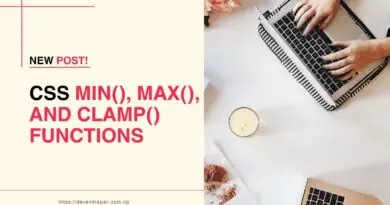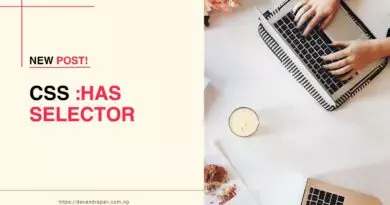Introduction to Media Queries CSS
- Introduction to Media Queries CSS
- Understanding Responsive Web Design
- The Role of Media Queries
- Syntax and Usage of Media Queries
- Basic Syntax
- Media Types
- Logical Operators
- Media Features
- Mobile-First Approach with Media Queries
- Creating Breakpoints for Different Devices
- Common Breakpoints for Mobile, Tablet, and Desktop
- Applying Styles with Media Queries
- Modifying Layouts
- Adjusting Typography
- Hiding or Showing Elements
- Optimizing Images
- Testing and Debugging Media Queries
- Best Practices for Using Media Queries
- Keeping Media Queries Organized
- Avoiding Overly Specific Queries
- Optimizing Performance
- Advanced Techniques with Media Queries
- Retina Displays and High-Density Screens
- Orientation Changes
- Print Stylesheets
- Media Queries in CSS Frameworks
- Bootstrap
- Foundation
- Future Trends and Evolving Standards
- Conclusion
- FAQs
Media Queries CSS: Building Responsive Web Designs
In today’s digital landscape, where users access websites and applications across a multitude of devices, it’s crucial for web designers and developers to create responsive designs that adapt to different screen sizes. Media queries in CSS play a vital role in achieving this goal, allowing us to tailor the appearance and behavior of web content based on the characteristics of the user’s device. In this article, we’ll explore the concept of media queries, their syntax and usage, and how they enable the creation of responsive web designs.
Introduction to Media Queries CSS
With the increasing diversity of devices, ranging from smartphones and tablets to laptops and large desktop monitors, it’s no longer feasible to design separate websites or applications for each screen size. Media queries provide a solution by allowing web developers to apply different styles based on specific conditions, such as screen width, height, or device orientation.
Understanding Responsive Web Design
Before diving into media queries, it’s essential to understand the concept of responsive web design. Responsive web design is an approach that aims to create web pages that respond and adapt to the user’s device, providing an optimal viewing experience. By using fluid grids, flexible images, and CSS media queries, responsive designs can adjust the layout, typography, and other visual elements based on the available screen space.
The Role of Media Queries
Media queries act as a gatekeeper for applying styles to different devices. They allow us to define conditions under which specific CSS rules should be applied. For example, we can specify that a particular style should only be active if the screen width is below a certain threshold. This flexibility empowers designers to create layouts and experiences that cater to various devices without sacrificing visual appeal or usability.
Syntax and Usage of Media Queries
Basic Syntax
The basic syntax of a media query consists of the @media the rule followed by a media type or media feature enclosed in parentheses. Inside the curly braces, we define the CSS rules to be applied if the condition is met. Here’s an example:
@media screen and (max-width: 767px) {
/* CSS rules for screens with a maximum width of 767 pixels */
}
Media Types
Media types allow us to target specific categories of devices. Common media types include all (default), screen, print, speech, and more. By choosing the appropriate media type, we can ensure our styles are applied to the intended devices.
Logical Operators
Logical operators such as and, or, and not can be used to combine multiple conditions within a media query. These operators enable more complex targeting, allowing us to refine our styles based on multiple criteria.
Media Features
Media features are conditions that can be checked within a media query, such as width, height, orientation, aspect ratio, and many others. By utilizing media features, we can fine-tune our styles to respond to specific device characteristics.
Mobile-First Approach with Media Queries
A mobile-first approach to web design involves starting with the smallest screen size and progressively enhancing the layout and functionality as the screen size increases. Media queries play a central role in this approach by allowing us to define specific styles for larger devices while ensuring a solid foundation for mobile devices.
Creating Breakpoints for Different Devices
To optimize the user experience across various devices, we need to define breakpoints – specific screen widths at which the design adapts. Common breakpoints are commonly set for mobile, tablet, and desktop devices, ensuring smooth transitions and readability.
Applying Styles with Media Queries
Media queries offer a range of possibilities for modifying styles based on device characteristics. Here are some common ways to utilize media queries:
Modifying Layouts
By using media queries, we can adjust the layout of a web page or application to best suit the available screen space. For example, we can change the arrangement of elements, switch from a multi-column layout to a single-column layout, or hide certain sections to optimize the user experience.
Adjusting Typography
Typography is a crucial aspect of design, and media queries allow us to tailor it for different devices. We can modify font sizes, and line heights, and even change fonts altogether to ensure readability across various screen sizes.
Hiding or Showing Elements
Certain elements may be more or less relevant depending on the screen size. With media queries, we can hide or show specific elements based on device characteristics. For example, we might choose to hide a sidebar on mobile devices to provide a more focused and streamlined experience.
Optimizing Images
Images often contribute to the overall page weight, affecting performance. With media queries, we can serve different image sizes or even replace images with CSS-based alternatives to ensure fast loading times and a smooth browsing experience.
Testing and Debugging Media Queries
When working with media queries, it’s important to test and debug them thoroughly to ensure consistent and expected behavior across devices. Modern web browsers provide developer tools that allow us to simulate different screen sizes and test the responsiveness of our designs.
Best Practices for Using Media Queries
To make the most of media queries and ensure a seamless user experience, it’s essential to follow some best practices:
Keeping Media Queries Organized
Maintaining well-organized media queries helps streamline the development process and makes it easier to manage and maintain the codebase. Group related queries together and use descriptive comments to provide clarity.
Avoiding Overly Specific Queries
Avoid writing overly specific queries that target individual devices or screen sizes. Instead, focus on creating responsive designs that adapt to a range of screen sizes. This approach ensures flexibility and future-proofs your designs.
Optimizing Performance
Media queries can sometimes lead to increased file sizes if not used judiciously. Optimize performance by minimizing the number of queries, keeping stylesheets lean, and utilizing techniques like minification and compression.
Advanced Techniques with Media Queries
While media queries are primarily used to create responsive layouts, they offer advanced capabilities as well. Here are some additional techniques:
Retina Displays and High-Density Screens
With media queries, we can target devices with high-resolution screens, commonly known as retina displays. By providing higher-resolution images and adjusting the typography, we can ensure sharp and visually pleasing experiences.
Orientation Changes
Media queries can detect changes in device orientation, allowing us to modify styles dynamically. For example, we can adjust the layout and typography when a user switches a mobile device from portrait to landscape mode.
Print Stylesheets
Media queries can also be used to define styles specifically for printing purposes. This enables us to create printer-friendly versions of web pages, removing unnecessary elements and optimizing the layout for the printed medium.
Media Queries in CSS Frameworks
CSS frameworks like Bootstrap and Foundation provide pre-defined media queries and responsive grid systems that simplify the process of building responsive designs. These frameworks handle the heavy lifting of media queries, allowing developers to focus on content and customizing styles as needed.
Future Trends and Evolving Standards
As technology advances and new devices emerge, the landscape of media queries and responsive web design continues to evolve. Standards such as CSS Grid and Flexbox provide additional tools for creating responsive layouts, and new media features are being introduced to cater to modern devices.
Conclusion
Media queries in CSS are a powerful tool for creating responsive web designs that adapt to various devices. By utilizing media queries, designers and developers can craft engaging and user-friendly experiences that deliver the right content in the right format, regardless of screen size or device orientation.
FAQs
1. Are media queries supported in all web browsers? Yes, media queries are supported in modern web browsers, including Chrome, Firefox, Safari, and Edge. However, older browsers may have limited support, requiring fallback solutions for older devices.
2. Can media queries be used in conjunction with other CSS selectors? Absolutely! Media queries can be combined with other CSS selectors to create complex targeting and apply styles based on multiple conditions simultaneously.
3. How can I test my media queries during development? Modern web browsers provide developer tools that allow you to simulate different screen sizes and test the responsiveness of your designs. Additionally, there are online tools and services that can help you preview your website on various devices.
4. What is the difference between mobile-first and desktop-first approaches? The mobile-first approach focuses on designing for mobile devices first and then progressively enhancing the design for larger screens. Desktop-first approach, on the other hand, starts with a desktop layout and adapts it for smaller screens. The mobile-first approach is generally recommended for better scalability and performance.
5. Can media queries be used for more than just responsive designs? Yes, media queries have applications beyond responsive designs. They can be used for creating print stylesheets, targeting specific device capabilities, or even implementing dark mode for websites and applications.
Please show your support and appreciation by liking this prompt if you have found it truly helpful.
Full CSS media Query example below:
/* Desktop Styles */
/* Default styles for test-class */
.test-class {
/* Add your styles here */
}
/* Styles for large desktop screens */
@media (min-width: 1200px) {
.test-class {
/* Add your styles here */
}
}
/* Styles for medium-sized desktop screens */
@media (min-width: 992px) and (max-width: 1199px) {
.test-class {
/* Add your styles here */
}
}
/* Styles for small desktop screens */
@media (min-width: 768px) and (max-width: 991px) {
.test-class {
/* Add your styles here */
}
}
/* Mobile Styles */
/* Styles for mobile screens */
@media (max-width: 767px) {
.test-class {
/* Add your styles here */
}
}
/* Styles for landscape-oriented mobile screens */
@media (max-width: 480px) and (orientation: landscape) {
.test-class {
/* Add your styles here */
}
}




